Scientific name Tinospora cordifolia Rank Species | Genus Tinospora Higher classification Tinospora | |
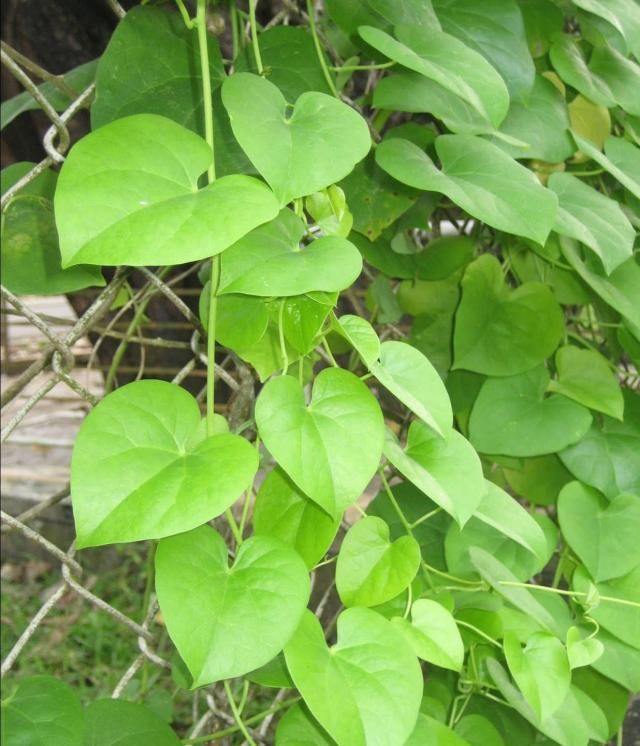 | ||
Similar Tinospora, Shatavari, Rennet, Green chiretta, Indian gooseberry | ||
84 how to grow giloy tinospora cordifolia amrita guduchi amruthaballi from cutting 12 7 16
Tinospora cordifolia, which is known by the common names heart-leaved moonseed, guduchi and giloy, is an herbaceous vine of the family Menispermaceae indigenous to the tropical areas of India, Myanmar and Sri Lanka.
Contents
- 84 how to grow giloy tinospora cordifolia amrita guduchi amruthaballi from cutting 12 7 16
- Vernacular names
- Botanical description
- Chemical composition
- Traditional medicine
- Ecology
- References
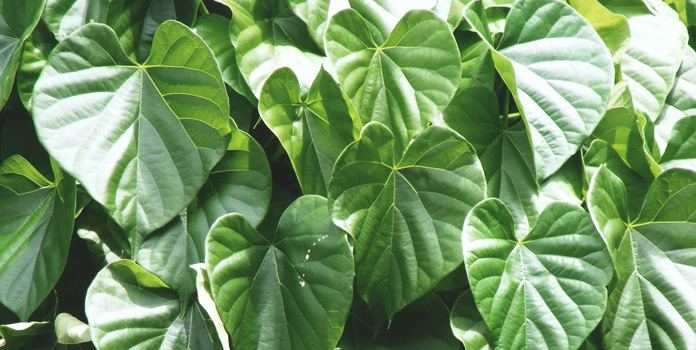
Vernacular names
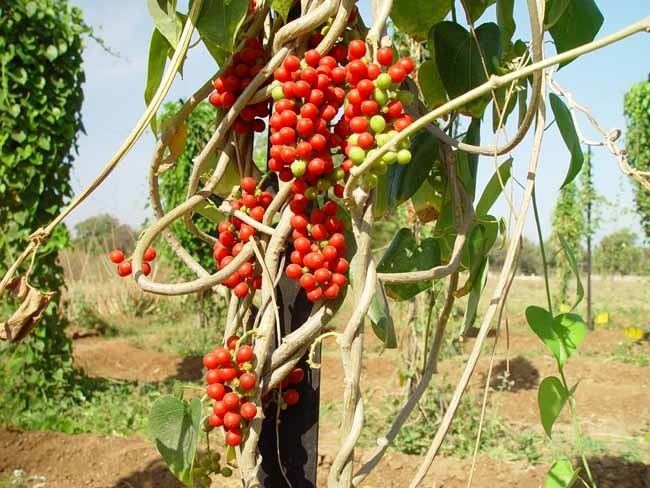
There are many common names for this species in different languages. Punjabi: گلو (Gllow), Telugu: తిప్ప తీగ (Tippa-teega), Tamil: சீந்தில் கொடி (Shindilakodi), Malayalam: ചിറ്റമൃത് (Amruthu, Chittamruthu), Kannada: ಅಮೃತ ಬಳ್ಳಿ (Amrutha balli),[14] Khmer: បណ្តូលពេជ្រ (bândaul pich), Sinhala: රසකිද Rasakinda, Thai: บอระเพ็ด (boraphét), Pali: galocī, Hindi:geloy (गिलोय), guruc (गुरुच), gurcha, Gujarati: galac, garo, Sanskrit: guduchi, amrta
, cinnodbhava (छिन्नोद्भवा), Bengali:Gulancha, Marathi: Guduchi (गुडूची), gulvel (गुळवेल), Odia: Guluchi, Myanmar: ဆင်တုံးမနွယ် Nepali: Gurjo (गुर्जो).
Botanical description
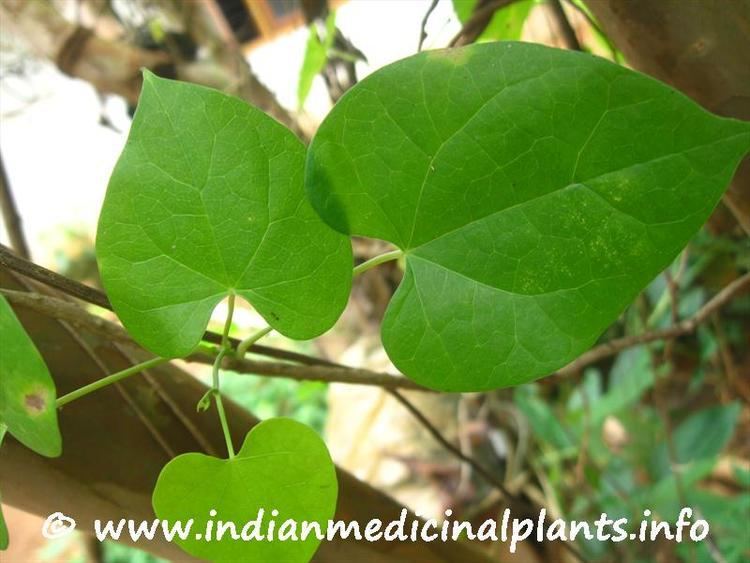
It is a large, deciduous extensively spreading climbing shrub with several elongated twining branches. Leaves simple, alternate, exstipulate, long petioles up to 15 cm long, roundish, pulvinate, both at the base and apex with the basal one longer and twisted partially and half way around. Lamina broadly ovate or ovate cordate, 10–20 cm long or 8– 15 cm broad, 7 nerved and deeply cordate at base, membranous, pubescent above, whitish tomentose with a prominent reticulum beneath. Flowers unisexual, small on separate plants and appearing when plant is leafless, greenish yellow on axillary and terminal racemes. Male flowers clustered, female usually solitary. Sepals 6, free in two series of three each, the outer ones are smaller than the inner. Petals 6 free smaller than sepals, obovate and membranous. Fruits aggregate of 1-3, ovoid smooth drupelets on thick stalk with sub terminal style scars, scarlet or orange coloured.
Chemical composition
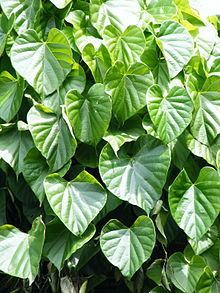
Columbin, tinosporaside, jatrorhizine, palmatine, berberine, tembeterine, tinocordifolioside, phenylpropene disaccharides, choline, tinosporic acid, tinosporal, and tinosporon have been isolated from Tinospora cordifolia.
Traditional medicine
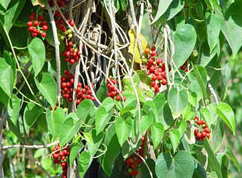
In Ayurvedic medicine, T. cordifolia is known as “Guduchi” and is considered to be one of the most divine herbs.
Ecology
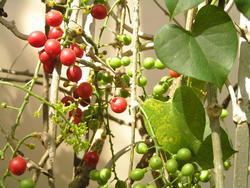
Endophytic fungi regarded as a fascinating group of organisms colonize the living, internal tissues of their host (usually higher plants) without causing any harmful effects. A recent study has shown that 29 endophytes belonging to different taxa were present in the samples collected from T. cordifolia.
Extracts of the endophytic fungus Nigrospora sphaerica obtained from T. cordifolia were found to have insecticidal properties against the Oriental leafworm moth (Spodoptera litura), a polyphagous pest.
